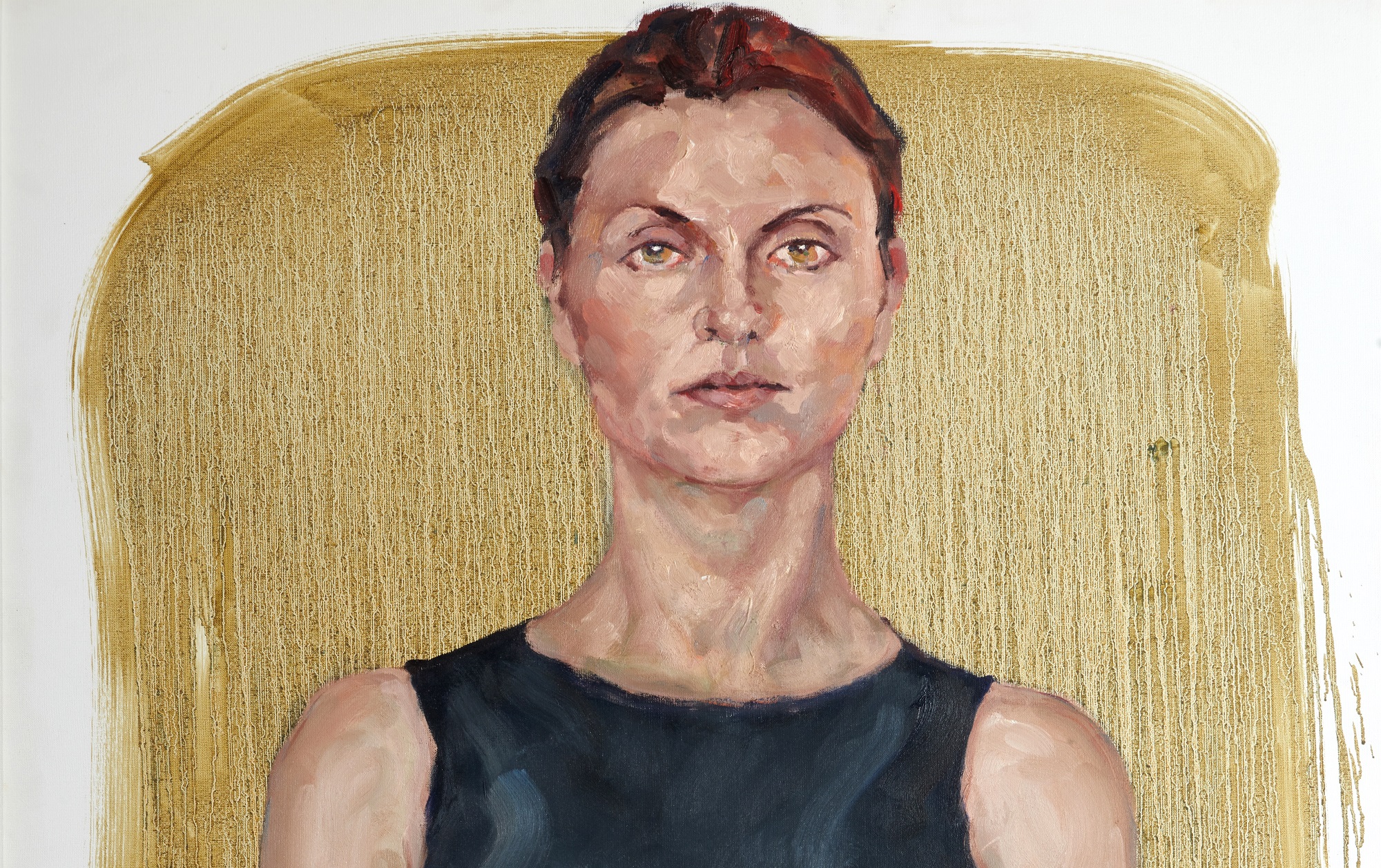Taking place between the 4th of December 2021 and the 9th of January 2022 at the Gran Salon of the Museum of Archaeology in Republic Street, Valletta, ‘The Journey’ showcases no fewer than 34 paintings, including a bozzetto, centered on the artist’s ongoing artistic exploration of the human body.
Every woman is a destiny
The feminine world, unarmed and disarming. Women who manifest their regality into a domestic environment, in different positions, mostly seated, on chairs, sofas, stools. Rigorously stiff. Alone or in groups of three. An essential humanity, exclusively feminine, women closed in their own solitude. Artist Patrick Dalli observes them without compassion and without indulgence and establishes with them a dialogue from the distance. He interrogates them without assigning them meaning, he is only concerned with representing their bare existence. Dalli invites them to resist. Nothing more natural than a nude. The paintings done as part of the studies in the Accademia are exercises in style. Dalli’s nudes are in a domestic context. They wait and they look at us looking at them without fear of judgment. They observe the painter who is observing them but in his mind is thinking of Giorgione, Tiziano, Cagnacci, Subleyras, Goya, Manet, Bacon, Freud, Jenny Saville’s nudes. He cites none of them, but evokes all of them. And in front of his nudes the images of those masters come to mind like a reel, images of which, without repeating the poses, recalling the posture of the legs, the crouching on a bed or the laying on a sofa, the relaxation of the arms, the bodies weaving together, the calm seating of fat and sometimes deformed bodies. Dalli studies all postures, he wants bodies to talk, he wants them to express psychological conditions, to evoke feelings: which is why the sources, perhaps excluding Freud, are never directly quoted, to avoid mediation or distance. Dalli cares so much about essences and destinies, and for this reason he pays particular attention to the faces, looking at them intently until he reveals their intimacy. He speaks of himself through the thoughts visible in the eyes of every woman.
It is the pictorial translation of Michel Tournier’s narrative, the great French writer who describes the behaviour of a photographer, a “faceist”, a photographer of faces, namely a portraitist, who wants to find in unknown women, found on the streets, a mystery, a secret thought. He invites them in his studio, maintaining a professional attitude, and asks them, as he would with any painting model, to undress. Some are not surprised, others, worried, ask him why it is necessary to undress to have their portrait painted. And it might be rational; but the photographer, clear-headed, explains that the expression of a face on a dressed body is rigid, conventional, posed, and even though the expression of a face reveals its truth and its candour, the naked body is essential. The head then has a different light, rising, gushing out from the candour of the body. The psychological behaviour of those who are dressed assumes a mask, and indirectly influences the face. This is exactly what is seen in Dalli’s portraits. The faces are full of distant thoughts, nostalgias, affections, they are more disarmed than the bodies and express, each time, determination, resignation, understanding.
The world is still, and they come after a long day, to pose, and reveal their memories, embarrassments, turmoils. None of them exits her solitude, they stay in silence, without dialogue, without action. They stay, simply they stay. Sometimes Dalli represents the same person and the same naked body in different moods or positions, and he delights himself in painting overweight bodies, on the verge of deformation, in sloppy or prone attitudes. Each one of them has the body she was given, with sagging breasts, fat around the thighs, and the certainty of not being desired. But there is dignity in resignation, which does not always happen in Freud. Nudity does not limit dignity. But Dalli’s women are calmly, peacefully naked, and their faces mostly impenetrable. Dalli does not ask for intimacy or familiarity, nonetheless participation, he asks for consciousness of their given existence. Each of them has a body, a face. In the long series, Dalli represents humanity in its infinite variety, but there is never exhibitionism, self-pity, or even presumption of oneself. Every woman is a destiny, a possible story. Beyond the body there is life, a tale, and what sociologists call a past. Dalli simply records it, he does not meet athletic naked bodies, nor performative, provocative, sexy ones. He insistently reproduces a variety of existences and by undressing women, he actually saves them any embarrassment. Unlike male nudes, the female figure does not lose power when naked. He brings back the origin of life, which sees us coming into the world naked, from the bodies of naked women in a primary condition. Then the disguise begins. And in our choice of clothing, each one of us layers on components of their personality. We dress in the way we interpret ourselves, masking our imaginary humanity. These women are in their original status, and their body language cannot deceive. Singularly, even more lucid interpreters of feelings and human emotions, like Freud, and a long time before him, the Italian Fausto Pirandello, have, with such determination, painted powerful naked portraits of women with the same abundant substance that Dalli is proposing again to us. Nudity is revelation, the rest is useless: it is history, custom, attitude, fiction. Here: Dalli exits the theatre of the world and goes back to pure existence. It might seem like an obsession: it is rather the simplicity of life.
